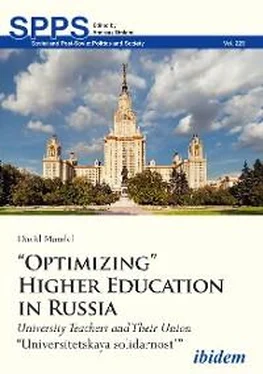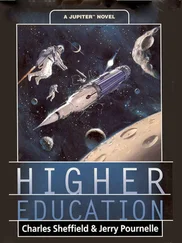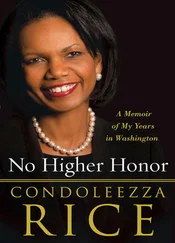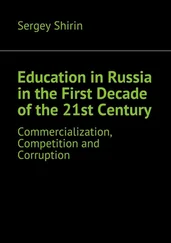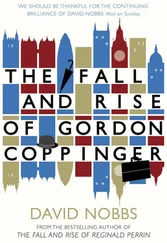The dark side of this newly-found freedom and opportunities to participate in university affairs was a dramatic decline in salaries. The average salary of a university teacher in 2000 was a mere 1,226 rubles (approximately $US 40). 15Moreover, the payment of wages and salaries in the 1990s was often delayed, sometimes for weeks and even months, this in conditions of hyperinflation without indexation. A Moscow teacher recalled that “Salaries were so insultingly low that they barely covered the cost of transportation to and from the university.” Many with better options simply left the university, contributing to Russia’s massive brain drain.
Those who remained survived by various means, including depending on their spouse’s income or by renting out their apartment and living in their dacha . But the main means of survival was to take on additional teaching, sometimes in one’s own institution, but more often at other universities. This was possible because many teachers had left the profession, while the number of students enrolled in higher education expanded rapidly from the mid 1990s, almost tripling by 2008 (facilitated by the introduction of tuition-paying admission in public university and the expansion of private universities), after which their numbers began to fall. 16Many teachers earned money by tutoring high-school students for university entrance exams, while others took on consulting and other part-time work in private business. This additional work took a serious toll on the quality of teachers’ lives and their teaching, but it was more or less tolerable since the official teaching load was still relatively moderate at that time. Outside of the larger metropolitan areas, however, opportunities for earning extra money were much more limited.
The decline in salaries was accompanied by a decline in the prestige of the university teaching profession. And teachers’ own self-esteem suffered from their poverty and inability to do conscientious work. An overall decline in academic standards occurred, especially evident in the low quality of many dissertations: thesis defences became less demanding, often assuming a more-or-less formal character, without serious debate or criticism. Plagiarism became widespread, with various high government officials and parliamentary deputies in search of academic degrees showing the way. 17
The attitudes of young people toward higher education also changed. In Soviet times, students often explained their pursuit of higher education in idealistic terms—a desire for self-realization and to contribute to social progress. In the 1990s, however, making money was at the fore, as a university diploma came to be viewed primarily as a means to finding a better-paying job. 18Concern for the quality of that education was, at best, a secondary consideration, an attitude often shared by employers. 19An additional motivation for male students was the desire to avoid, or at least postpone, military service.
Because lower-school teachers suffered similar economic hardship and were also forced to take on additional work, the level of preparation of students for university studies declined sharply. An economics teacher at Moscow State University recalled about this period: “They had apparently not learned about society in high school. It shocked me. I began by talking about simple things, and these young people quickly pulled out their notebooks to take notes. So there was some desire to learn. But they lacked a foundation. I had the impression that they had been completely deprived of knowledge. This was the middle 1990s.”
When the Soviet Union came to an end in a “revolution from above,” university teachers, as practically all the rest of Russian society, lacked traditions and experience of independent organization to defend their interests. The newly acquired freedom and opportunities to participate in university governance fell into their hands without struggle. And at once teachers were thrust into a struggle for physical survival, a condition completely unfamiliar to Soviet citizens. Indeed, an unstated goal of “shock therapy” was in that way to prevent significant popular resistance. 20And it succeeded well in the case of university teachers. As for the Trade Union of Employees of Education and Science, a corporatist organization inherited from the Soviet Union, it continued to rubber stamp the decisions of government and university authorities.
c. 2000-2012: Return of the State
The first decade of the new millennium began with the election of Vladimir Putin to the presidency of Russia. He was Yeltsin’s handpicked successor, a man who, among other things, could be relied upon to protect Yeltsin and his “family” from prosecution.
That decade saw the state’s return to an active role in educational policy, made possible by the economy’s emergence from its lengthy depression. There followed a decade of rapid economic growth, thanks in large part to a steep and prolonged rise in the price of oil, which eventually tripled. The recovery also benefitted from the dramatic fall of the ruble in 1998 (a devaluation that the IMF had consistently opposed) that cut imports in half, strongly boosting domestic production.
The state’s budget for education increased substantially from the desperately low levels of the 1990s, doubling by 2004 and growing even faster in subsequent years. As a percent of GDP in constant rubles, federal spending on higher education rose from 0.3% to 0.7% in 2000-2004 and another 140% in 2004-09%. 21Total expenditure from both public and private sources at all levels of education increased from 2.9% of GDP to 4.6% between 2000 and 2011. But even so, state spending on education was the fourth lowest among OECD members, well below the average of 6.1%. 22
During his first electoral campaign, Putin did not present anything resembling an economic programme. But the appointment of German Gref, author of the “Gref Plan,” as Minister of Economic Development and Trade foretold a strongly neoliberal social policy. In higher education, the government contemplated replacing direct state funding based on itemized budgets with vouchers that would be distributed to students on the basis of their scores in unified high-school finishing exams. As consumers of educational services, students would use their vouchers to apply to universities, forcing the latter to compete for these clients. But experiments with this programme drew criticism from virtually all quarters, not least rectors, and were abandoned in 2005, although unified state high-school finishing exams were generalized in 2009. 23That innovation reduced the widespread corruption that had surrounded university admissions and broadened choice for high-school graduates. But the negative impact of the reform on the quality of high-school education, whose final two years were geared to the state exams, continues to be decried by educators, as is the shift in pedagogical emphasis from instilling knowledge to prioritizing the acquisition of “competences.”
Although the voucher system was abandoned, the neoliberal orientation in higher-education policy became increasingly pronounced in Putin’s second four-year term. University funding was largely based on the number of state-supported students enrolled. The Federal Programme for the Development of Education of 2005 clearly designated the labour market as the leading driver of educational policy, an orientation that only grew stronger over time. The promotion of personal and social development barely received mention. The sought-after “national idea” for post-Soviet Russia had at last apparently been found: international competitiveness. That document also introduced the term “optimization,” a goal whose application in the social sphere would have a major negative impact on the condition of university teachers in the following decade. 24
Читать дальше
